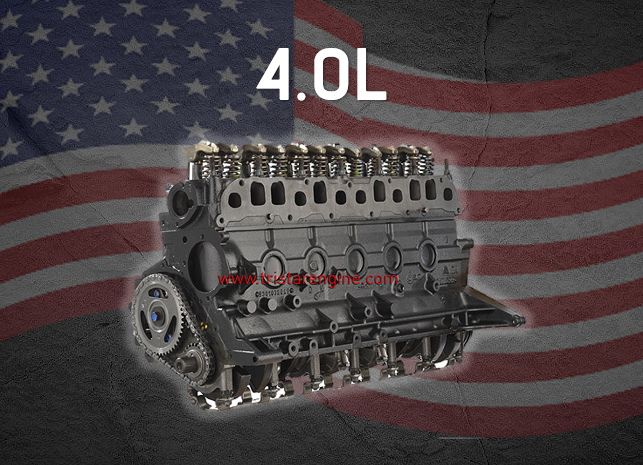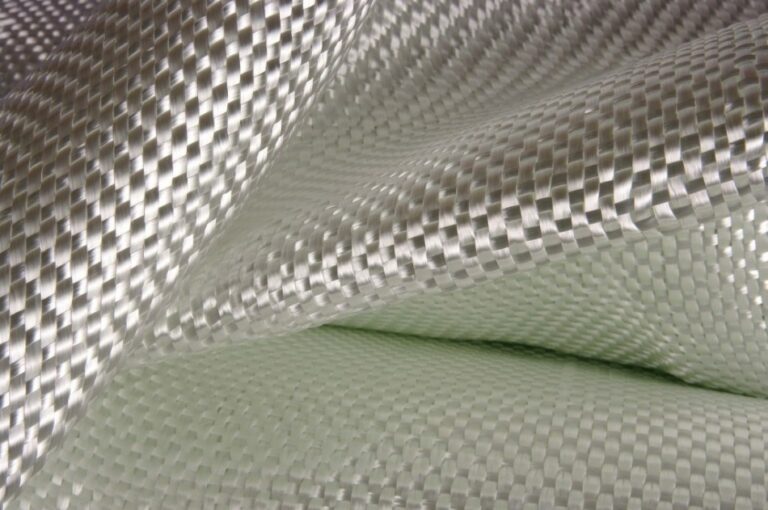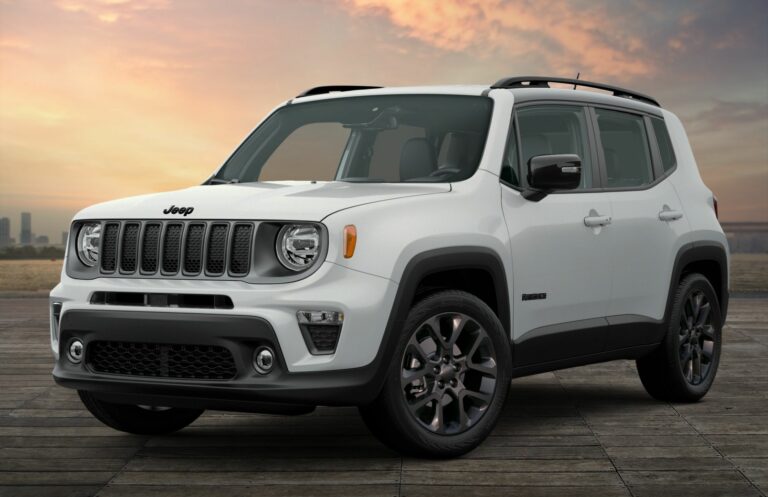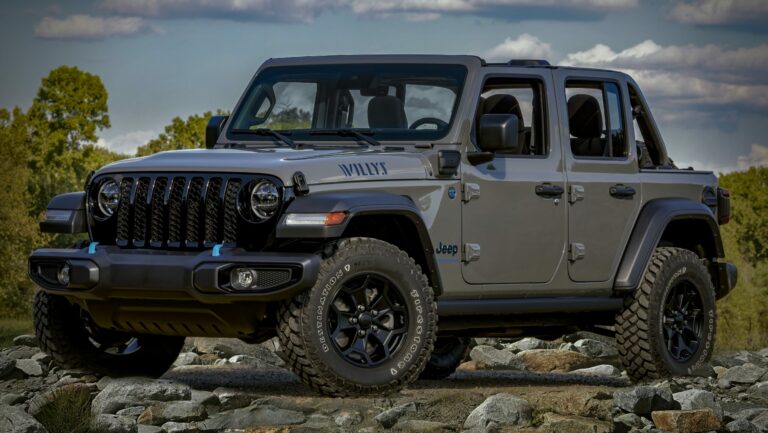Jeep Grand Cherokee 4.7 Wiki
Jeep Grand Cherokee 4.7 Wiki jeeps.truckstrend.com
Introduction: Unpacking the Legend of the 4.7L V8 Grand Cherokee
The Jeep Grand Cherokee has long stood as a pillar in the SUV market, renowned for its potent blend of rugged off-road capability and surprisingly refined on-road manners. Among its various powertrain options, the 4.7-liter V8 engine holds a special place in the hearts of many enthusiasts and owners. Often referred to simply as the "4.7L," this engine became a hallmark of the second-generation (WJ) and third-generation (WK) Grand Cherokees, offering a significant leap in power and torque over its 4.0L inline-six predecessor.
Jeep Grand Cherokee 4.7 Wiki
This comprehensive "Jeep Grand Cherokee 4.7 Wiki" serves as your ultimate guide to understanding this iconic powertrain and the vehicles it powered. From its technical specifications and performance characteristics to common maintenance tips, known issues, and practical ownership advice, this article aims to provide a detailed, wiki-style resource for anyone interested in or currently owning a Jeep Grand Cherokee equipped with the robust 4.7L V8. Whether you’re a prospective buyer, a seasoned owner, or simply curious about this influential engine, delve into the details that define the Jeep Grand Cherokee 4.7L experience.
The Powerhouse Defined: What is the 4.7L V8?
The 4.7-liter PowerTech V8 engine, internally known as the "Magnum" engine’s successor, was a significant development for Chrysler, first introduced in the 1999 Grand Cherokee (WJ). It was designed to offer smoother operation, better fuel efficiency (for a V8 of its time), and more power than the outgoing 5.2L and 5.9L V8s.
Generations and Variants:
- Second Generation (WJ): 1999-2004 Grand Cherokee
- Standard 4.7L (PowerTech): Initially producing 235 horsepower and 295 lb-ft of torque. It featured a cast-iron block, aluminum heads, and a single overhead cam (SOHC) per bank design.
- 4.7L High Output (HO): Introduced in 2002, this enhanced version boosted performance to 265 horsepower and 330 lb-ft of torque. Achieved through a higher compression ratio, different camshafts, revised intake manifold, and specific exhaust tuning. The HO engine was often paired with the more advanced Quadra-Drive II 4WD system.

- Third Generation (WK): 2005-2009 Grand Cherokee
- Standard 4.7L: For the WK, the 4.7L engine received further refinements, including revised cylinder heads, a new intake manifold, and electronic throttle control. Power output was generally around 235-250 hp and 300-305 lb-ft of torque, depending on the year.
- Flex-Fuel Capability: Later WK models with the 4.7L gained flex-fuel capability, allowing them to run on E85 ethanol blend, though this often came with a slight reduction in power and fuel economy.

The 4.7L V8 provided a compelling option for Grand Cherokee buyers who desired more muscle than the standard inline-six but didn’t necessarily need the ultimate power of the later 5.7L HEMI or the SRT-8’s 6.1L V8.
Why Choose the 4.7L Grand Cherokee? Benefits and Capabilities
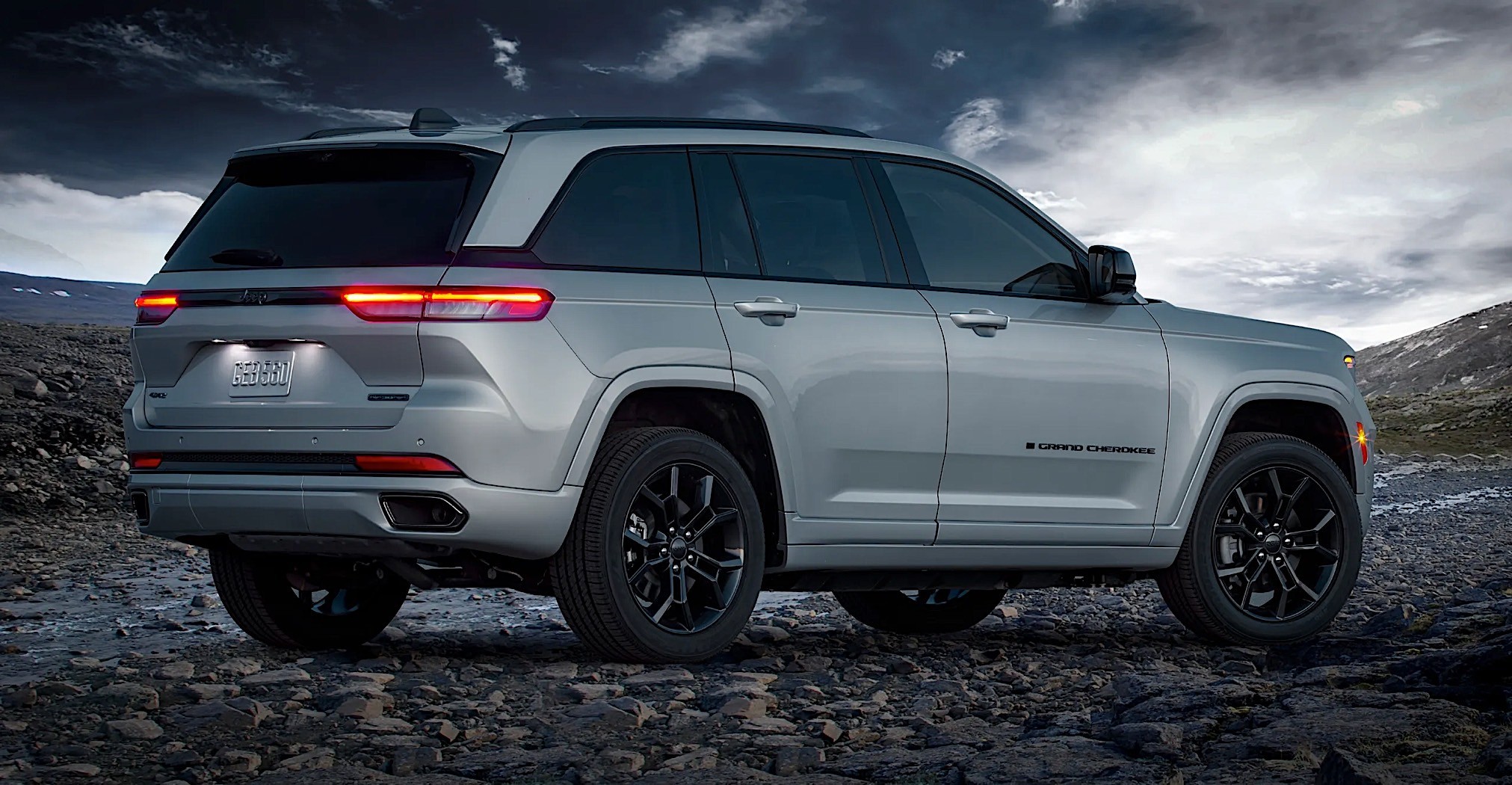
The 4.7L Grand Cherokee offers a compelling package of attributes that continue to make it a popular choice in the used vehicle market.
- Robust Performance: With 235-265 horsepower and 295-330 lb-ft of torque, the 4.7L V8 provides ample power for daily driving, highway merging, and passing. It feels significantly more effortless than the 4.0L inline-six, especially with a full load or when towing.
- Strong Towing Capacity: This is one of the primary benefits. Depending on the year, configuration, and specific equipment (e.g., axle ratios), 4.7L Grand Cherokees typically boast a towing capacity ranging from 5,000 to 6,500 pounds, making them suitable for hauling trailers, boats, or campers.
- Off-Road Prowess: Coupled with Jeep’s legendary 4×4 systems (Quadra-Trac II or the highly capable Quadra-Drive/Quadra-Drive II with front and rear electronic limited-slip differentials), the 4.7L provides the necessary torque for tackling challenging off-road terrain, rock crawling, or deep snow.
- Value for Money: As a used vehicle, the 4.7L Grand Cherokee often represents excellent value. Its initial depreciation has made it affordable, offering significant power and utility for its price point.
- Modifiability: For enthusiasts, the 4.7L platform is well-supported by the aftermarket. Lift kits, larger tires, armor, and performance upgrades are readily available, allowing owners to customize their Grand Cherokee for specific off-road or performance needs.
Essential Maintenance and Longevity Tips for Your 4.7L V8
While the 4.7L V8 is generally considered a durable engine, its longevity is heavily dependent on consistent and proper maintenance. Proactive care can prevent many common issues and ensure years of reliable service.
- Regular Oil Changes: This is paramount. The 4.7L, especially earlier versions, can be susceptible to oil sludge formation if oil change intervals are neglected or low-quality oil is used. Stick to the recommended oil type (typically 5W-30 or 10W-30, refer to your owner’s manual) and change it every 3,000-5,000 miles, or as per severe duty recommendations. Consider synthetic oil for added protection.
- Cooling System Health: Overheating can quickly damage any engine, and the 4.7L is no exception. Regularly inspect the radiator, hoses, thermostat, water pump, and fan clutch (on WJ models). Flush and replace coolant every 2-3 years. Ensure the radiator is free of debris.
- Transmission Fluid and Filter: The 4.7L is typically paired with robust automatic transmissions (45RFE/545RFE). Regular fluid and filter changes (every 30,000-60,000 miles, depending on use) are crucial for transmission longevity.
- Differential and Transfer Case Fluids: Don’t forget these vital components of the 4×4 system. Use the correct fluid types (e.g., Mopar NV247/NV249 fluid for certain transfer cases, specific gear oils for differentials) and adhere to service intervals.
- Spark Plugs and Ignition Coils: Replace spark plugs at recommended intervals (typically 30,000 miles for copper, longer for platinum/iridium if applicable) to maintain optimal combustion and fuel efficiency. Inspect ignition coils for signs of wear.
- Serpentine Belt and Pulleys: Check the serpentine belt for cracks or fraying and replace it if necessary. Listen for squealing or grinding from idler or tensioner pulleys, indicating worn bearings.
- Air and Fuel Filters: Replace the engine air filter regularly for optimal engine breathing. The fuel filter (often integrated into the fuel pump module on later models) should also be replaced as per schedule.
- Listen for Noises: Pay attention to any unusual engine noises, such as ticking (could be lifters or exhaust manifold leaks), knocking, or whining. Early detection can prevent costly failures.
Common Challenges and Known Issues of the 4.7L V8 Grand Cherokee
While generally reliable, the 4.7L Grand Cherokee does have some well-documented quirks and potential issues that prospective and current owners should be aware of.
Engine-Specific Issues (4.7L V8):
- Oil Sludge: As mentioned, a history of neglected oil changes can lead to severe oil sludge buildup, restricting oil passages and potentially causing lubrication failures. A thorough pre-purchase inspection should look for signs of this.
- Dropped Valve Seats (Early HO Engines): A more serious, though less common, issue primarily affecting earlier 4.7L High Output engines (2002-2004 WJ HO). Due to manufacturing tolerances or design, valve seats could occasionally drop out of the cylinder head, leading to catastrophic engine damage. While not widespread, it’s a known concern for these specific years.
- Exhaust Manifold Bolts: It’s common for exhaust manifold bolts to break, especially on the passenger side. This results in an audible ticking or exhaust leak, particularly noticeable on cold starts. While annoying, it’s generally not a catastrophic issue but requires repair.
- Lifter Tick: A common, though often benign, characteristic. It can be caused by various factors, including slightly collapsed lifters, oil viscosity, or dirty oil. While sometimes just an annoyance, persistent loud ticking can indicate more serious issues requiring inspection.
- Crankshaft Position Sensor (CPS): A common failure point that can cause intermittent stalling, no-start conditions, or rough running. Relatively inexpensive and easy to replace.
General Grand Cherokee (WJ/WK) Issues:
- HVAC Blend Doors (WJ/WK): A notoriously common problem. The plastic blend doors that control air temperature and flow within the HVAC system can break, leading to inconsistent air temperature (e.g., only hot or cold air on one side) or inability to direct air properly. Repair often requires dash disassembly.
- Window Regulators: Electric window regulators are prone to failure, causing windows to stick, fall down, or operate slowly.
- Rust: Depending on climate and exposure to road salt, rust can be a significant issue, particularly on the frame, rocker panels, and around the wheel wells.
- Suspension Components: Bushings, ball joints, and tie rod ends wear out over time, leading to clunking noises, loose steering, or uneven tire wear.
- Electrical Gremlins: Like many vehicles of their age, intermittent electrical issues (e.g., dash lights, radio issues, sensor failures) can occur.
Buying and Owning a 4.7L Grand Cherokee: Practical Advice
If you’re considering purchasing a used 4.7L Grand Cherokee, or if you already own one, here’s some practical advice:
Pre-Purchase Inspection (PPI):
- Service Records: Always prioritize vehicles with comprehensive service records. This is the best indicator of how well the vehicle has been maintained, especially concerning oil changes.
- Cold Start Test: Listen carefully for engine noises (ticking, knocking) during a cold start. Check for exhaust leaks.
- Fluid Checks: Inspect all fluids (engine oil, transmission, coolant, brake fluid) for proper level and condition. Look for signs of leaks.
- 4WD System Check: Test all 4WD modes (2WD, 4WD High, 4WD Low) if applicable. Listen for unusual noises from the transfer case.
- HVAC Functionality: Verify that the HVAC system blows air at all temperature settings and through all vents. This can quickly reveal blend door issues.
- Rust Inspection: Thoroughly inspect the frame, floorboards, rocker panels, and suspension mounting points for rust.
Ownership Tips:
- Adhere to Maintenance Schedule: Follow the service intervals diligently, especially for fluid changes.
- Use Quality Parts and Fluids: Don’t skimp on oil, filters, or other replacement parts.
- Address Issues Promptly: Don’t ignore warning lights or unusual noises. Addressing small problems early can prevent larger, more expensive failures.
- Join Forums/Communities: Online forums (e.g., JeepForum, WJJeep, GrandCherokeeForum) are invaluable resources for troubleshooting, DIY guides, and connecting with other owners.
Estimated Market Value and Key Specifications: Jeep Grand Cherokee 4.7L
The price of a used Jeep Grand Cherokee 4.7L can vary significantly based on year, mileage, condition, trim level, and geographical location. The table below provides estimated ranges and key specifications for informational purposes. These are general guidelines, and actual market prices may differ.
| Generation | Years | Engine Type (Code) | Original Horsepower (HP) | Original Torque (lb-ft) | Est. Used Price Range (USD)* | Notes |
|---|---|---|---|---|---|---|
| WJ | 1999-2004 | 4.7L V8 (EVA) | 235 | 295 | $2,000 – $6,000 | Standard engine, widely available. |
| WJ | 2002-2004 | 4.7L HO V8 (EVF) | 265 | 330 | $3,000 – $8,000 | Higher performance, often with Quadra-Drive. |
| WK | 2005-2009 | 4.7L V8 (EVA/EVE) | 235-250 | 300-305 | $4,000 – $10,000 | Refined engine, later models flex-fuel capable. |
*Disclaimer: Prices are highly variable and depend on condition, mileage, trim, options, and market demand. These are rough estimates for well-maintained examples.
Frequently Asked Questions (FAQ) about the Jeep Grand Cherokee 4.7L
Q1: Is the Jeep Grand Cherokee 4.7L a reliable engine?
A1: Generally, yes, with proper maintenance. Its reliability heavily depends on consistent oil changes. Neglect can lead to sludge and premature wear. The early 4.7L HO engines (2002-2004) had a rare but severe issue with dropped valve seats, though this is not common across all 4.7Ls.
Q2: What’s the difference between the standard 4.7L and the 4.7L High Output (HO)?
A2: The 4.7L HO offers more power and torque (265 hp/330 lb-ft vs. 235 hp/295 lb-ft for the standard). This was achieved through higher compression, different camshafts, and intake/exhaust tuning. The HO was typically found in higher trim levels (e.g., Overland, Limited) of the WJ Grand Cherokee.
Q3: What kind of fuel does the 4.7L Grand Cherokee use?
A3: Most 4.7L engines are designed to run on regular 87 octane unleaded gasoline. Later WK models with the 4.7L gained flex-fuel capability, meaning they can also run on E85 ethanol blends. Always check your owner’s manual for specific recommendations.
Q4: What are the most common problems to watch out for on a 4.7L Grand Cherokee?
A4: Key issues include HVAC blend door failure, exhaust manifold bolts breaking, potential for oil sludge (if neglected), and wear on suspension components. For early 4.7L HO engines, the rare dropped valve seat issue is a critical concern.
Q5: Is the 4.7L Grand Cherokee good for off-roading?
A5: Absolutely. Combined with Jeep’s robust 4×4 systems (especially Quadra-Drive/Quadra-Drive II), the 4.7L V8 provides excellent low-end torque, making it very capable on trails, in mud, and over obstacles. It’s a popular choice for off-road enthusiasts due to its capability and aftermarket support.
Q6: What is the towing capacity of the 4.7L Grand Cherokee?
A6: The towing capacity typically ranges from 5,000 to 6,500 pounds, depending on the year, specific vehicle configuration (e.g., axle ratio), and whether it has a factory tow package. Always consult your owner’s manual for the precise towing capacity of your specific vehicle.
Conclusion: The Enduring Legacy of the Jeep Grand Cherokee 4.7L
The Jeep Grand Cherokee 4.7L V8, encompassing both the WJ and WK generations, represents a significant chapter in the Grand Cherokee’s storied history. It offered a compelling blend of V8 power, respectable towing capability, and legendary Jeep off-road prowess, making it a highly versatile and appealing SUV for its time.
While these vehicles are now firmly in the used market, their inherent durability and the availability of parts and aftermarket support ensure they remain a viable and enjoyable option for many. Understanding the specific characteristics of the 4.7L engine – its benefits, maintenance requirements, and common issues – is key to a rewarding ownership experience. With diligent care and proactive maintenance, a 4.7L Grand Cherokee can continue to deliver reliable performance and adventure for years to come, solidifying its place as a true icon in the world of SUVs.
.jpg)
